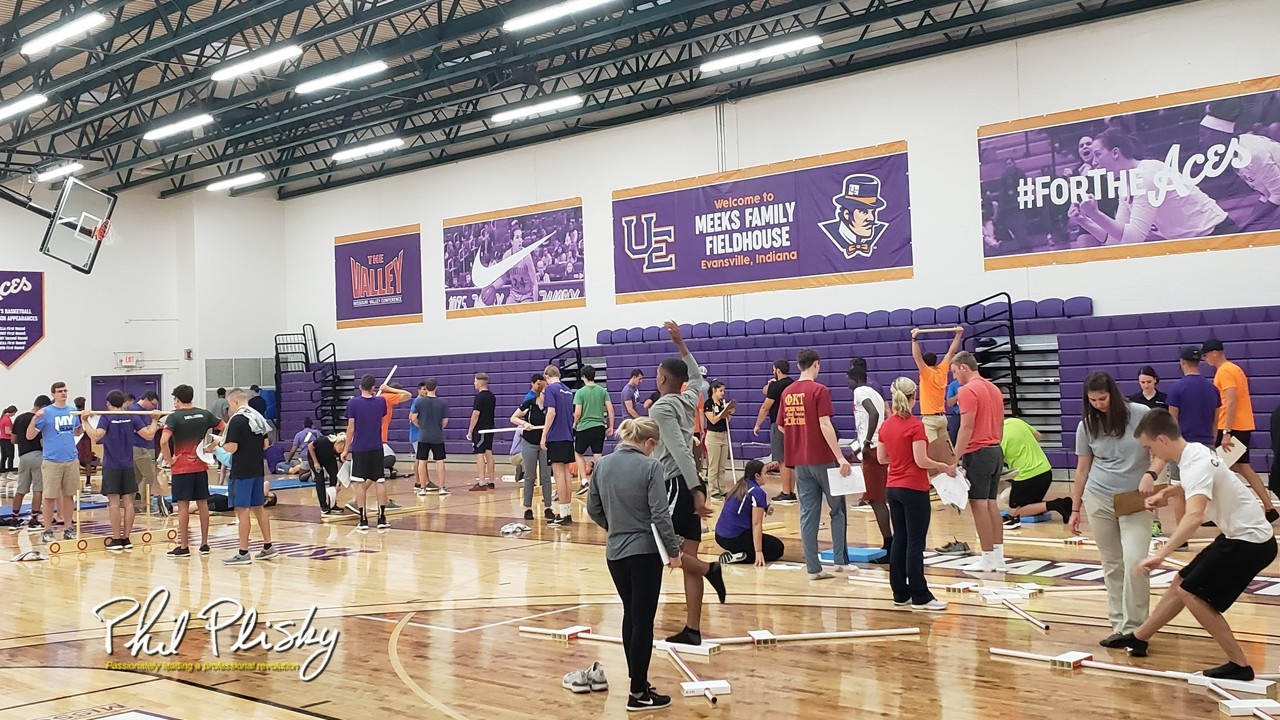
5 things you should know about injury prevention with teams and large groups
So you have decided to take the plunge — you are going to try some injury prevention with a large group or team. You have already talked with the coach and have some “buy in” (if you don’t, start here).
Here are 5 things that will help make your injury prevention successful:
1. Start Small – Just like dieting, small incremental steps are key to permanent success. People hear that we test 150 athletes in 2-3 hours and give real-time reports of performance, risk categories, and corrective exercises for each athlete and try to figure out how they can do that in their first attempt. This didn’t happen overnight for us.
Just like water eroding rock over time, we gradually changed our injury prevention culture over several YEARS. If you start by simply setting a goal of making your injury prevention better than it was last year, you will gradually get there. Here are a few suggestions:
- Start with a coach you have a good relationship with and one team
- Select one or two tests to do (see below)
- Ask injury history questions
- Work with the individuals who had pain with testing
- Be sure to retest those individuals to ensure the risk factors have normalized.
2. Categorize to maximize your resources – Particularly when testing large groups, it can be a daunting task to try addressing the risk factors you find. If you categorize individuals by their degree of risk (Lehr 2013) and (Teyhen 2020), you can make the process more manageable.
3. It’s gonna take a village – I frequently feel like I am on an “injury prevention island”. With some discussion, I do find many like-minded individuals. Some have tried injury prevention strategies before only to stop because they didn’t have good buy-in.
Others (particularly coaches) want to implement injury prevention, but don’t know how. Still others have misconceptions about how long it is going to take or how difficult it is. Just like other behavioral change, Start with Why to get people on board.
When talking with a coach, discuss performance and durability benefits. For medical personnel, discuss keeping our athletes healthy and on the field. Also, think outside of the box when assembling your team of testers. Elicit the help of students (of any type: exercise physiology, PT, ATC, etc can help with the simpler testing), coaches (corralling the athletes), parents (ensuring forms are completed), and front desk personnel (data entry). They can all do something to help.
4. Use reliable, evidenced-based, predictive tests that can be completed quickly – Most frequently, I use injury history, Y Balance Test and Functional Movement Screen (I clearly acknowledge my bias here — I would love to hear what you use).
5. Start with Return to Sport Testing – Remember, previous injury is the most consistently reported risk factor for future injury so be sure you are using predictive, evidence-based tests in your discharge protocol. In other posts and courses, I take research-based look at discharge testing and answer some commonly asked questions like:
If you don't have research-based, comprehensive, rigorous discharge and return to sport checklists, there are 3 (lower body, upper body, and spine) free under resources.
So, if you are currently doing injury prevention, write down your goals for making your injury reduction strategies better than last year. If you haven’t started, utilize a few of the strategies to get started on a small scale.










